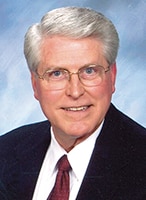 A Meeting with Mary
A Meeting with Mary
Formations: April 16, 2017
Scripture: John 20:1-2, 11-18
 I was the dinner guest of a scientist and his wife in their lovely home in South Korea. The wife was active in the church where I was preaching but the husband was not a believer. He saw Christianity as a moral philosophy, dismissing the resurrection as a folk tale. I asked him if he understood everything about the physical world and he laughed, responding, “No one does.” Since no one has all the answers I suggested there could be much more to reality than the obvious tangibles, that there are evidences of resurrection in things as common as seeds and spectacular as an exploding nova.
I was the dinner guest of a scientist and his wife in their lovely home in South Korea. The wife was active in the church where I was preaching but the husband was not a believer. He saw Christianity as a moral philosophy, dismissing the resurrection as a folk tale. I asked him if he understood everything about the physical world and he laughed, responding, “No one does.” Since no one has all the answers I suggested there could be much more to reality than the obvious tangibles, that there are evidences of resurrection in things as common as seeds and spectacular as an exploding nova.
Read the accounts of Jesus life, death and resurrection and you realize that Jesus’ closest disciples had difficulty with his resurrection. We will never know everything about our universe and we will never be able to fathom the mystery of resurrection, but that does not dismiss its truth. My gracious Korean host thanked me for our conversation and said he would examine his wife’s faith.
Today we consider the struggle of Mary Magdalene as she goes to the tomb of Jesus, not to celebrate his resurrection but to grieve his death. She had the answers before the crucifixion, but could not see beyond the brutal reality. We should not accuse her of having weak faith because we all may have faced circumstances and losses when we could not get beyond the emotional pain or disappointment. But faith in the God who loves us enables us to recover and rediscover hope in his grace.
For three years Jesus had been preparing his followers for the cross and resurrection. They had not only listened to his powerful and compassionate teachings, they had seen his miracles of healing, witnessed him raising the dead and learned the unbelievable expansiveness of God’s love. Jesus is more than a rabbi, more than a prophet, more than a philosopher. Jesus is one with God. But turning those words into flesh and blood reality is not so easy. The graphic brutality of the cross seemed so final. So Mary comes to mourn at the tomb. Because of controversy, Jesus was buried in another family’s tomb (Joseph of Arimathea) and the Romans had sealed the tomb and stationed a military guard (Matthew 27:57-66). When Mary found the tomb open and empty, she rushed back to the apostles with her anguished news.
A wealthy family’s tomb was large enough to carry a body inside, place it on a stone shelf and allow the flesh to decay naturally. The entrance would be secured with a stone to keep scavenging animals out and keep the odor of decay inside. After decomposition, the bones were placed in a stone box called an ossuary and put in a niche, leaving the shelf vacant for the next burial. When Mary arrived she expected the tomb to be sealed and guards present. Her natural reaction is recorded in her words to Simon Peter and “the other disciple” (John): “They have taken the Lord from the tomb, and we don’t know where they’ve put him” (v. 2). Peter and John rush to the tomb and John notes the telling evidence of the grave clothes neatly folded as though they were no longer needed (vv. 3-10). John is the only apostle in the four gospel accounts to believe purely on the basis of seeing the empty tomb.
We can only imagine the emotions and questions within the gathering of Jesus followers in Jerusalem that morning. Who has taken the body – the Romans or the Sanhedrin? Has Jesus really risen? Will they be coming for us next?
Mary goes back to the tomb. Her vision is blurred by tears. She looks into the tomb and sees two angels where Jesus body had been placed (v. 12). Her grief is beyond words and nothing makes sense. The angels ask her, “Woman, why are you crying?” Her grieving response is simply, “They have taken my Lord’s body, but I don’t know where” (v. 13). Mary must have been in numbed shock as she turns away and comes face to face with Jesus (v. 14). Jesus repeats the words of the angels: “Woman why are you crying? Who are you looking for” (v. 15)? She thinks this man is a gardener who tends the cemetery and she expresses her desire to provide a proper burial for her Jesus. But when Mary hears him speak her name she realizes this is Jesus! Suddenly, without logical explanation, she answers him with the familiar title “Rabbouni” (v. 16). There is a sense of warmth in this title, which means “my teacher or master.”
John does not give details of this encounter, but judging by Jesus’ words Mary reached out to touch him. He says to her, “Don’t hold on to me, for I haven’t yet gone up to my Father” (v. 17). Some commentators interpret this as Jesus’ need to ascend to heaven and return before he could be touched, but the context suggests that her hope and joy cannot come from touching him, that faith must be built on God’s promises, beyond Jesus’ physical presence. Jesus charges Mary “(instead of holding on to me) Go to my brothers and sisters and tell them ‘I’m going to my Father and your Father, to my God and your God” (v. 17). There is an intimate faith connection that exceeds physical and time limitations. By faith we become members of God’s family. Mary’s previous frantic report has been transformed to “I’ve seen the Lord” (v. 18).
Seeing is not always believing. Mary saw the empty tomb, the angels and Jesus standing before her in the garden, yet she could not grasp the truth. Jesus’ voice speaking her name seems to have broken through her pain. She wanted to touch him, but Jesus did not want the truth to be dependent on her physical senses. We always want God to show or verify his truth by tangible means, by answering specific prayers or by providing a visible sign. But faith must go beyond those expectations.
We watch those first disciples as they actually see the risen Christ and later witness his ascension to heaven. But their lives and their gift to us becomes real as they spread the gospel across the world by the presence and power of God’s Spirit. Our calling is not to stay in the garden, gazing into an empty tomb or watching Jesus disappear into the clouds, but to be out in the world, living by Jesus’ example and sharing the good news.
What is it about this obscure country rabbi who never traveled far from home, had no worldly stature or wealth and came from a people who were oppressed and belittled so much of their history? Yet this humble man who is the only begotten Son of God, killed by government and religious authorities, continues to impact our world and give eternal life to all who dare to believe in him. Our focus is not on an empty tomb, but on the risen Christ!
Retired after more than 45 years in pastoral ministry, Michael K. Olmsted enjoys family, supply preaching and interim work, literature, history, the arts and antiques.
Formations is a curriculum series from Smyth & Helwys Publishing, Inc. through NextSunday Resources.
The PDF download requires the free Acrobat Reader program. It can be downloaded and installed at https://get.adobe.com/reader.


